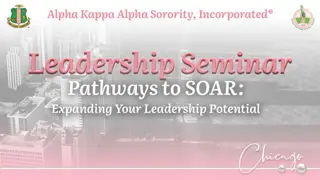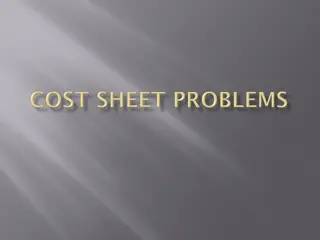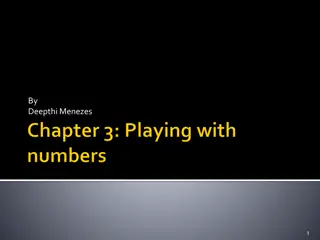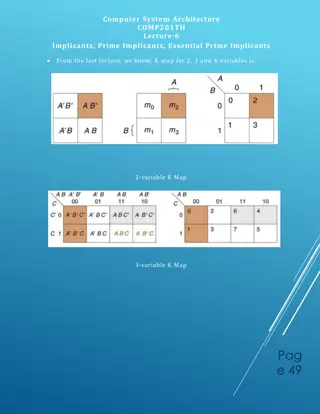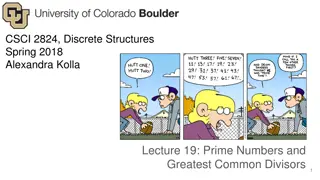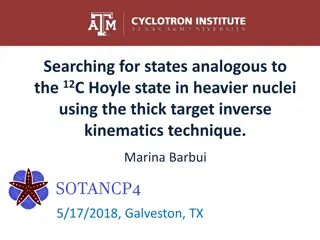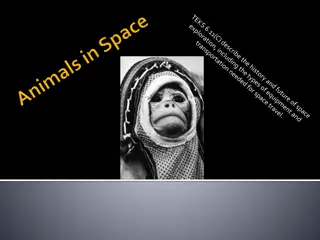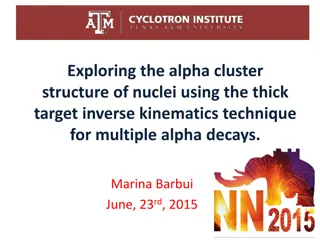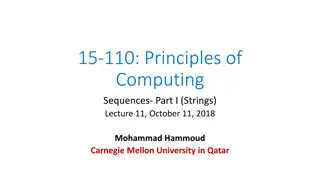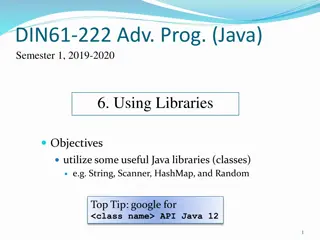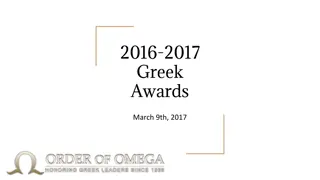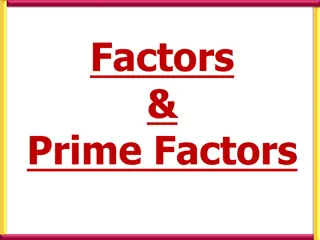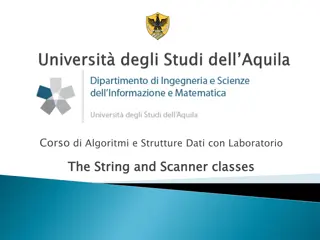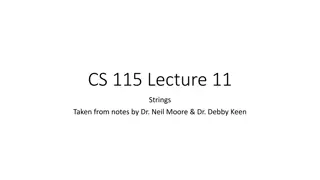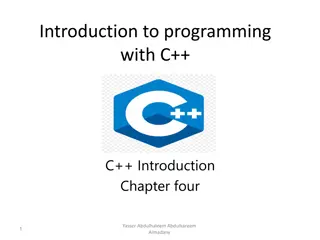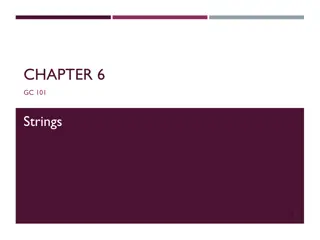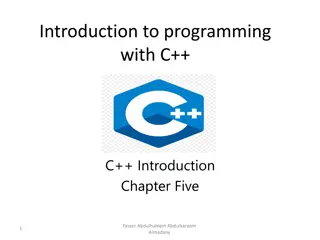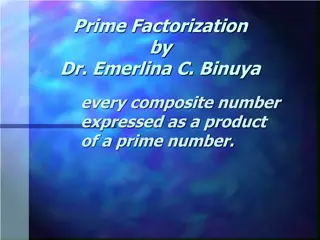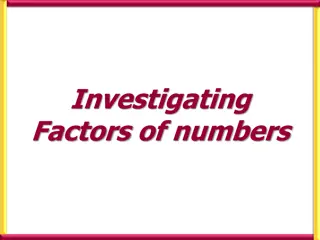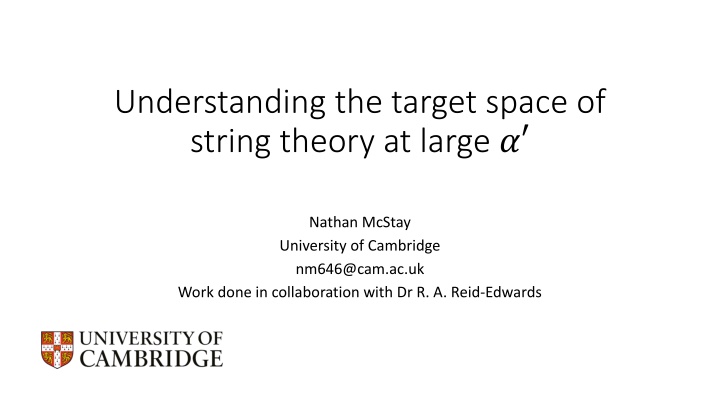
Understanding the Target Space of String Theory at Large - Nathan McStay
Delve into the complexities of string theory's target space as Nathan McStay from the University of Cambridge explores the perturbative expansion in special backgrounds to probe large values of key parameters. Gain insights into interacting quantum field theories, worldsheet conformal field theory, and the unique properties of WZW models in this fascinating study.
Download Presentation

Please find below an Image/Link to download the presentation.
The content on the website is provided AS IS for your information and personal use only. It may not be sold, licensed, or shared on other websites without obtaining consent from the author. If you encounter any issues during the download, it is possible that the publisher has removed the file from their server.
You are allowed to download the files provided on this website for personal or commercial use, subject to the condition that they are used lawfully. All files are the property of their respective owners.
The content on the website is provided AS IS for your information and personal use only. It may not be sold, licensed, or shared on other websites without obtaining consent from the author.
E N D
Presentation Transcript
Understanding the target space of string theory at large ? Nathan McStay University of Cambridge nm646@cam.ac.uk Work done in collaboration with Dr R. A. Reid-Edwards
Introduction: String theory on curved spacetime
Introduction (1/4) String theory is defined by a double perturbative expansion in ? and ??, meaning we need these parameters to be small. Nevertheless, in today s talk we want to understand how, for special backgrounds, we can probe large values of ? . Let s first remind ourselves of where this ? expansion comes from and the problems of large ? . A long string (large ? ) in ???3.
Introduction (2/4) 1 4?? ?2? | | ?????????? ???(?) ?????= This is a NLSM embedding into a spacetime with metric ???? . Gauging ?? lands on a 2d interacting QFT for generic ???(?). We expand ??? = ??+ ? ??(?) about a fixed point and work perturbatively in ? . This expansion is valid provided ? ?? for some characteristic length scale of the spacetime.
Introduction (3/4) We now have a means for studying the interacting QFT, but we need the worldsheet to moreover describe a CFT. The presence of interactions means we have to solve for the vanishing of the beta functions. The order to which we expand in ? affects these equations. The string phenomenology approach is to take ? 0 and solve to leading order, giving appropriate spacetime geometries to perturb around. In summary, solving for a worldsheet CFT is complicated and restrictive on ? !
Introduction (4/4) Interestingly, a special class of CFTs called WZW models avoid this problem. They use group theory to preserve the CFT at larger values of ? . We can apply WZW models to spacetimes that are group manifolds (see later). These include ???3 and ?3. Nevertheless, we lose sight of the target space we embed into when ? is large. The group symmetry structure is preserved but there are large ? corrections to the geometry.
Plan for the rest of the talk (1/2) We will focus on ???3 ?3 ?4 as an example and consider the case ? . We will discuss how to reinstate a sigma model interpretation for spacetime via embedding fields. If you re asking why we should care, recall AdS/CFT is a strong- weak duality, so by studying this limit we are dual to a free CFT. The details of the duality in fact become manifest for ? . The aim of this talk is to provide an introduction to large ? string theory, rather than on applying it to AdS/CFT. It is primarily based on 2306.16280 [NM,Reid-Edwards], where you can find more on applications to AdS/CFT.
Plan for the rest of the talk (2/2) We ll discuss these two!
The WZW model (1/4) Lie groups are continuous groups specified by differentiable manifolds. WZW models are sigma models that have Lie groups as their target space. Hence, in the context of string theory, if the spacetime you are interested in embedding into can be written as a Lie group, you may apply a WZW model. AdS3 is such an example.
The WZW model (2/4) As an embedding into ?2,2, we restrict to the hyperboloid ? 1 We may rewrite this as the group ?? 2,? , ? 1 + ?1 ?0 ?2 Hence, ???3 is the group manifold of ??(2,?) and we may apply a WZW model. ?? 2,? ??(2,?) is the global symmetry group of ???3. Similarly, ?3 ??(2). 2+ ?0 2 ?1 2 ?2 2= 1. ?0 ?2 ? 1 ?1 ? = .
The WZW model (3/4) Via the exponential map, we may replace Lie groups by Lie algebras. In fact, the WZW action contains an extended symmetry algebra called an affine Lie algebra this is a Lie algebra plus a central extension. The global ??(2,?) generators ?? are extended to a full mode expansion ?? ?? ?is called the ``level and it is quantized for ???3 ?3, ? ?. ? for a current ??(?) with commutator of the form ?,?? + ???????+?,0 ? ?= ????? ??+?
The WZW model (4/4) The level ? is very important, since it is proportional to 1 ? = 1 represents the limit of large ? . This is how the WZW model extends beyond the supergravity regime: it maintains a worldsheet CFT for all ? ?. ? . Hence, Key takeaway: the starting point for large ? string theory on ???3 ?3 ?4 is the WZW of ?? 2,?1 ?? 21 (compact stuff).
The twistor space of ???3 (1/4) We now want to reinstate a sigma model interpretation for our theory to understand the target space geometry. It is well known that ?? 21 has a free field realisation in terms of weight free fermions ??,??, with ??,??= ???. ? = ? ? , ?3= 1 2?+? + ? ?+ There is a similar story for ?? 2,?1 with weight ``symplectic bosons denoted ??,??, with commutator ??,??= ???. ?3= 1 ? = ? ? , 2?+? + ? ?+
The twistor space of ???3 (2/4) Neatly, all of this information may be repackaged in terms of the supertwistors of ???3. We ll choose to focus only on the bosonic part today. Twistors describe spacetime in a non-local manner through null planes but preserve the causal structure. Twistor space and spacetime are related by the Penrose transform. The ? = 1 string embeds into the twistor space of ???3 via ??= ?? ??1 ??1. ??
The twistor space of ???3 (3/4) This is an exciting prospect: it is known that there is a manifest relationship between bulk and boundary theories in this language. The twistors of ???3 are precisely the ambitwistors of the boundary [ 16 Adamo, Skinner, Williams]. This is the first concrete example of the machinery used in the twistor literature being applied to conventional AdS/CFT. It suggests a simple description realisation of the AdS/CFT correspondence, as should be expected for ? .
The twistor space of ???3 (4/4) Nevertheless, it would be nice if we could recover a more conventional sigma model interpretation for the embedding of the string. In fact, this can be done using the Wakimoto representation of ?? 2,?1[ 23 NM, Reid-Edwards] [ 22 Naderi] [ 23 Dei, Knighton, Naderi]. We recover a clever embedding into ???3 that gives free fields.
Summary We have given a brief introduction into how to study string theory on ???3 ?3 ?4 at large ? via a WZW model. We can naturally rewrite this as an embedding into the (super)twistor space of ???3. It is possible to reinstate a traditional sigma model, embedding into ???3. Future work includes: Generalising arguments to ? > 1. In particular, understanding the role of the Wakimoto representation in this regime, which no longer provides a free theory. Could a similar study be performed on ???5? The twistor space of ???5 has many similar features to ???3.
Topics to discuss If you are interested, I d love to chat more about: How we can prove this example of AdS/CFT through covering maps. How we uncover a global radial translation symmetry, explaining why the degrees of freedom live at the boundary. Alternative perspectives on the spacetime geometry not discussed today and how they are connected. A sketch of a covering map.
Thank you! Questions? 2306.16280

